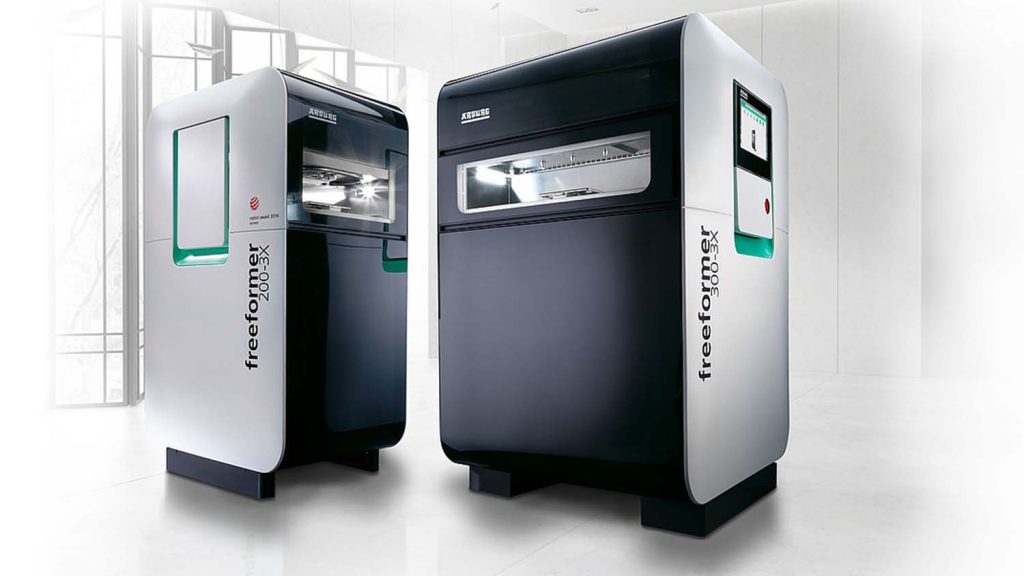Arburg has announced its latest model in its Freeformer family of pellet-fed 3D printers, the Freeformer 550-3X, and more innovative 3D printing applications to debut at Formnext in 2024.
Under the banner of Arburg’s additive manufacturing division, ArburgAdditive, the Freeformer 550-3X will be equipped with two discharge units and a 230 x 230 x 230-millimetre build chamber.
Slightly smaller but also more affordable than the Freeformer 750-3X, it will replace the Freeformer 200-3X, making it of particular interest to industrial customers looking to experiment with use of end-use polymers via Arburg Plastic Freeforming (APF).
“The new Freeformer 550-3X is an industrial machine with features that will enable even unskilled workers to quickly and reliably print high-quality functional parts,” says Simon Leitl, director development APF at ArburgAdditive. “One major advantage is that we can draw on a wealth of expertise and exploit synergies with the world of injection moulding, for example in the areas of control systems, automation, turnkey solutions and digitalisation.”
The latest features of the open system include an elevated droplet discharge, optimised material changes and, above all, the new production assistant, which actively supports the operator via its Gestica control system – from loading the build job to starting the 3D printing – as it looks to enable non-experts to develop a reliable, error-free process and to a high standard of quality.
A new addition to Arburg’s material portfolio is TR 90 material, which has been approved for food and drinking water, having been developed with Ems Chemie to make this amorphous PA12 original granulate 3D printable. Typically the material is used for items such as flexible and chemical-resistant frames for glasses. As a result, Arburg explains that the development time for injection-moulded products can be significantly reduced and the time to market accelerated.
From the InnovatiQ segment of Arburg’s 3D printing portfolio, it has announced the launch of the TiQ 8 filament printer. With a 500 x 400 x 450mm heated build chamber, it is focussed on flame-retardant materials such as PC and PEKK for the transport sector.
Also launching is InnovatiQ’s liquid silicone 3D printers ability to operate with a support material, accommodated by the LiQ 5 3D printer being equipped with a second print head.
Most intriguing is the first news of Arburg’s ‘Seestern’ project. Seestern, “Starfish” in German, is the use of StarJet conductive metals 3D printing and Freeformer technology for hybrid printing of structural electronics.
The heart of StarJet is a star-shaped nozzle through which metal droplets are ejected in order to print conductive electronic components from solder, for example. The aim is to integrate the StarJet technology into the build chamber and control system of the Freeformer so that multi-material hybrid components such as hybrid sensors can be additively manufactured industrially in a single step.
Hybrid printing with electrically conductive metals directly in the Freeformer build chamber is an interesting solution for the electronics industry that significantly reduces costs, the use of chemicals and logistical effort and also substantially shrinks the carbon footprint of the product.






